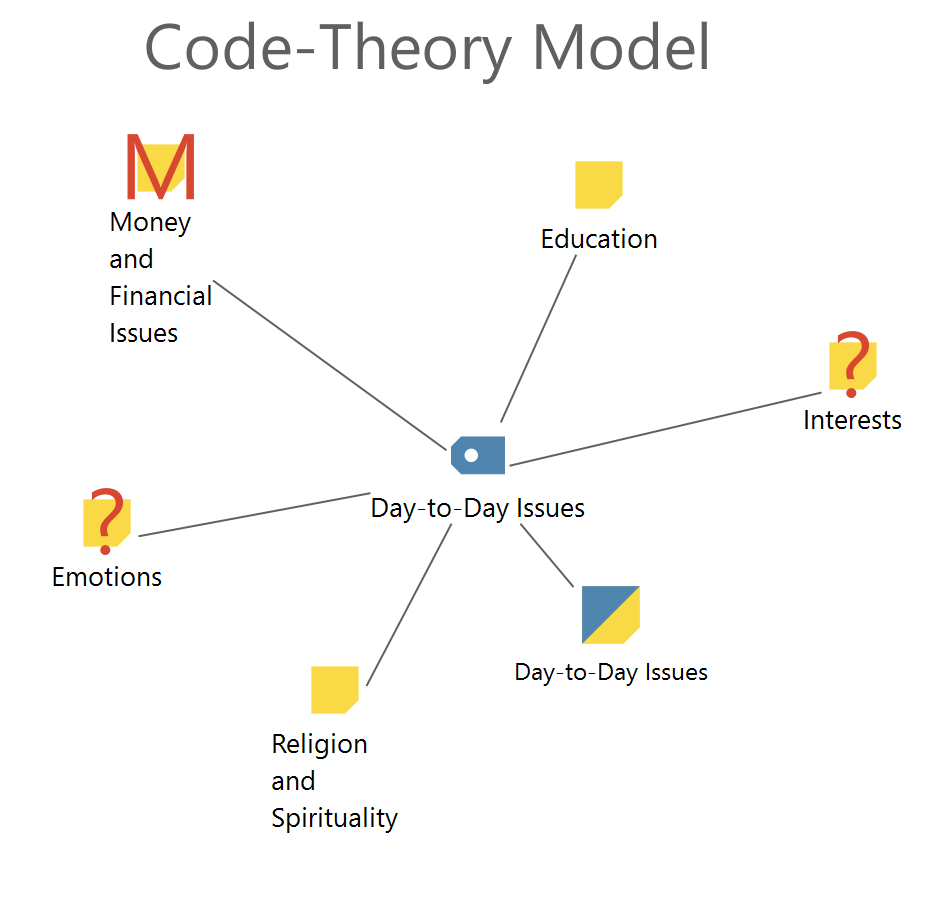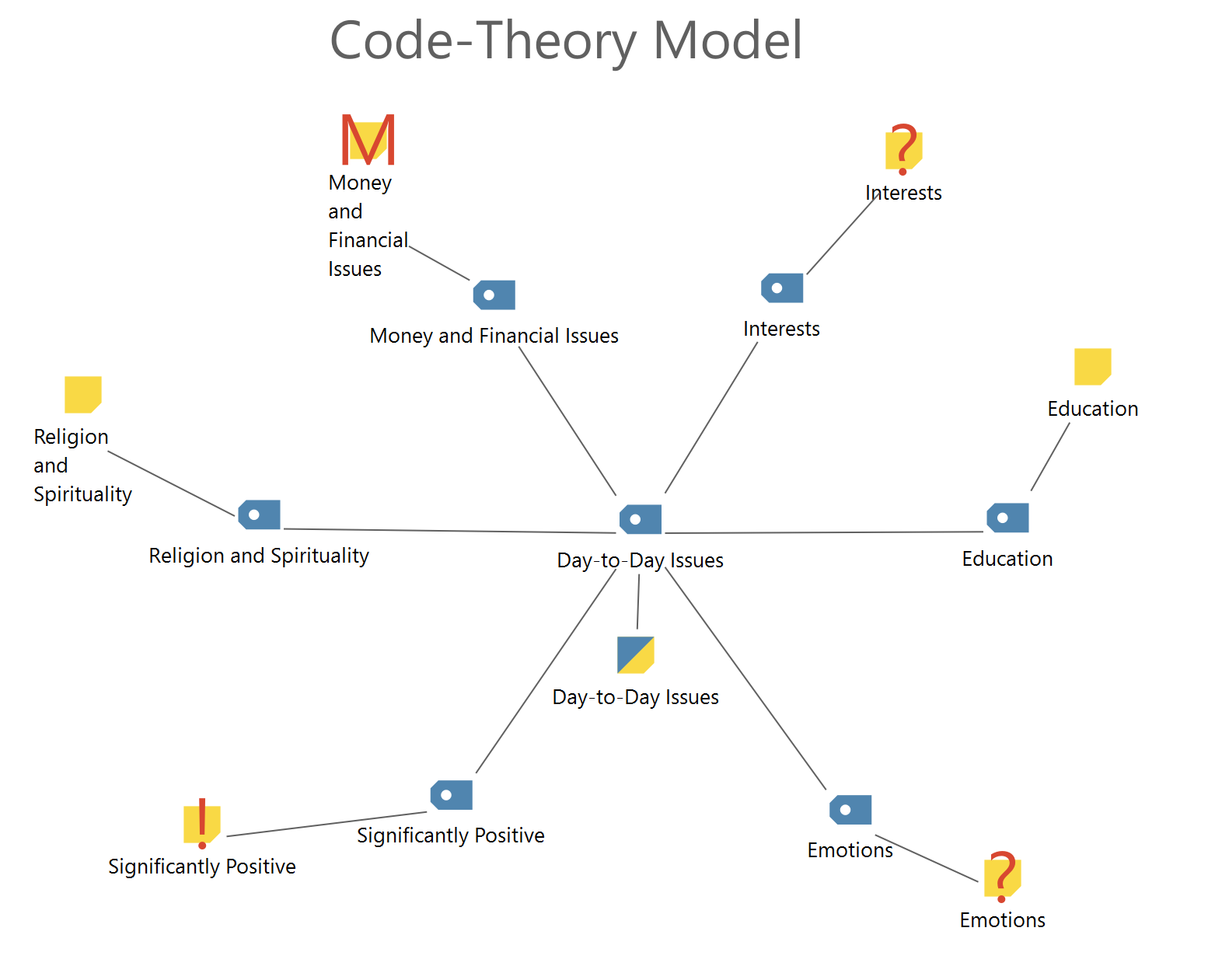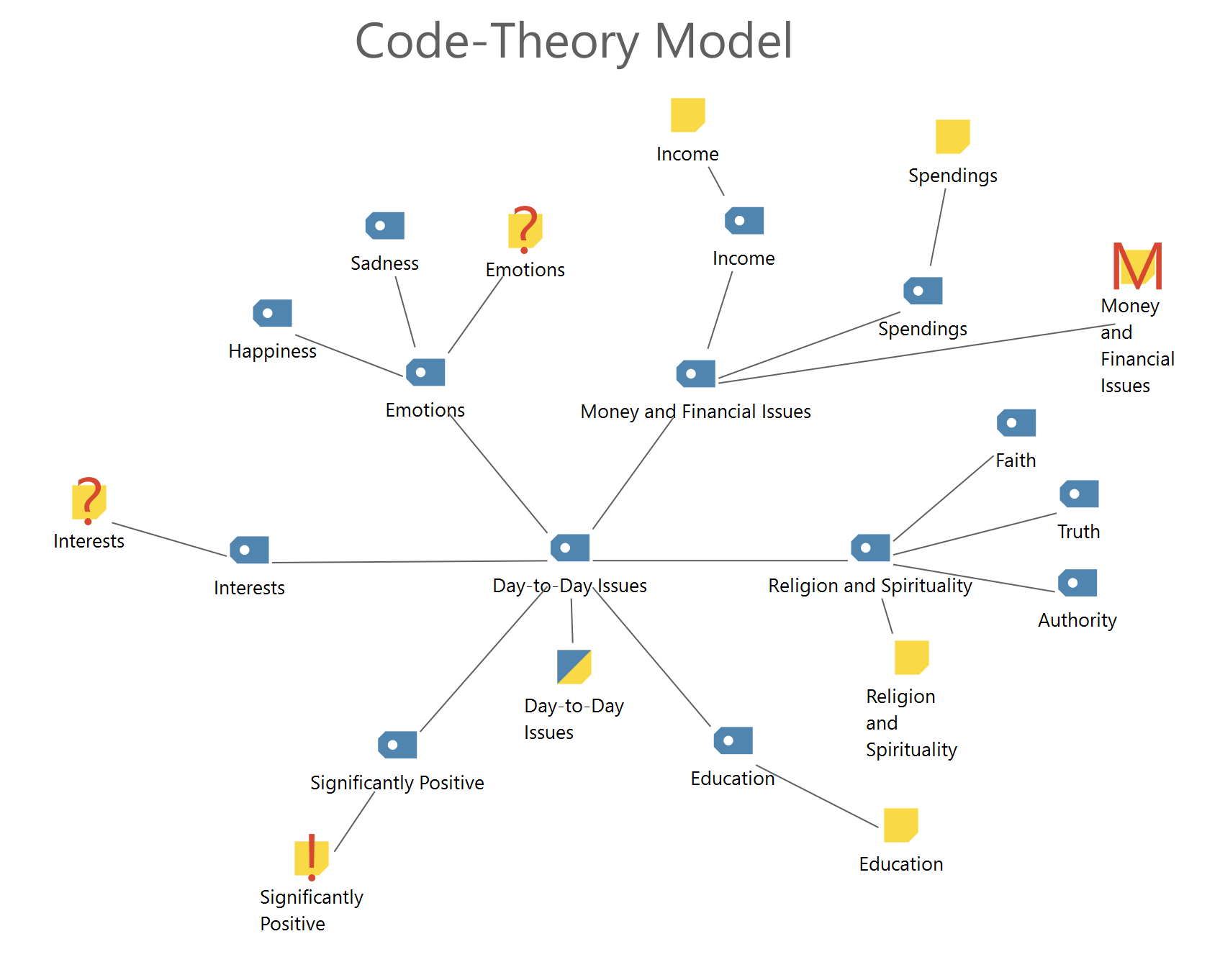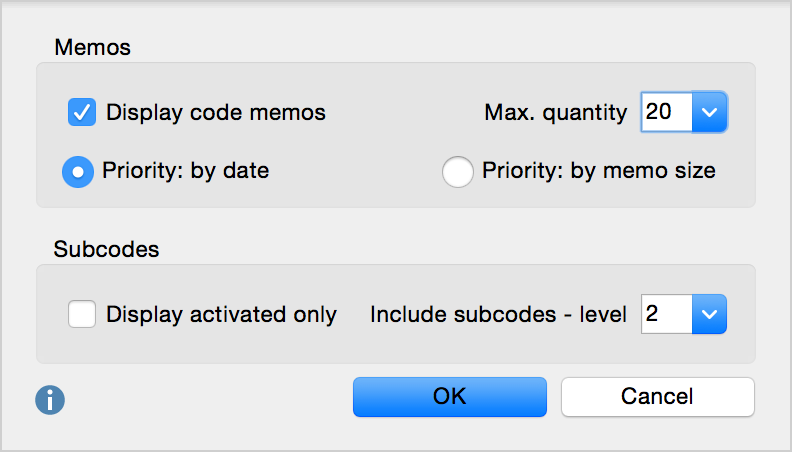Function of this model
A code, its subcodes (optional), and the memos attached to these code(s) are displayed in this model.
Model display in the map
The code icon is put in the center of the map with the subcodes arranged in a circle around it. Subcodes can be arranged on two hierarchical levels, with the first level forming an inner circle around the code, and the second level forming an outer circle. The memos are connected to the codes/subcodes with a line. Since memos can be linked to more than one code, each code may be connected with several lines.



Model options
In the Code Theory Model, the following elements can be included in the visualization:
- Memos that are attached or linked to the selected code (and its subcodes, if desired).
- Subcodes of the selected code.
Model options in detail

Memo options
- Display memos. If this box is not checked, no memos will be displayed in the map. If the box is checked, you can also set the maximum number of memos to be displayed. If there are more memos than the set maximum quantity to be displayed, the memos will be prioritized according to creation date (newer codes get priority) or according to the size (longer memos get priority).
Subcode options
- You can limit the visualized subcodes by only displaying those activated in the “Code System.”
- You can also decide how many levels of subcodes are displayed (0 = no subcodes; 1 = only the first level of subcodes; 2 = two levels of subcodes).
